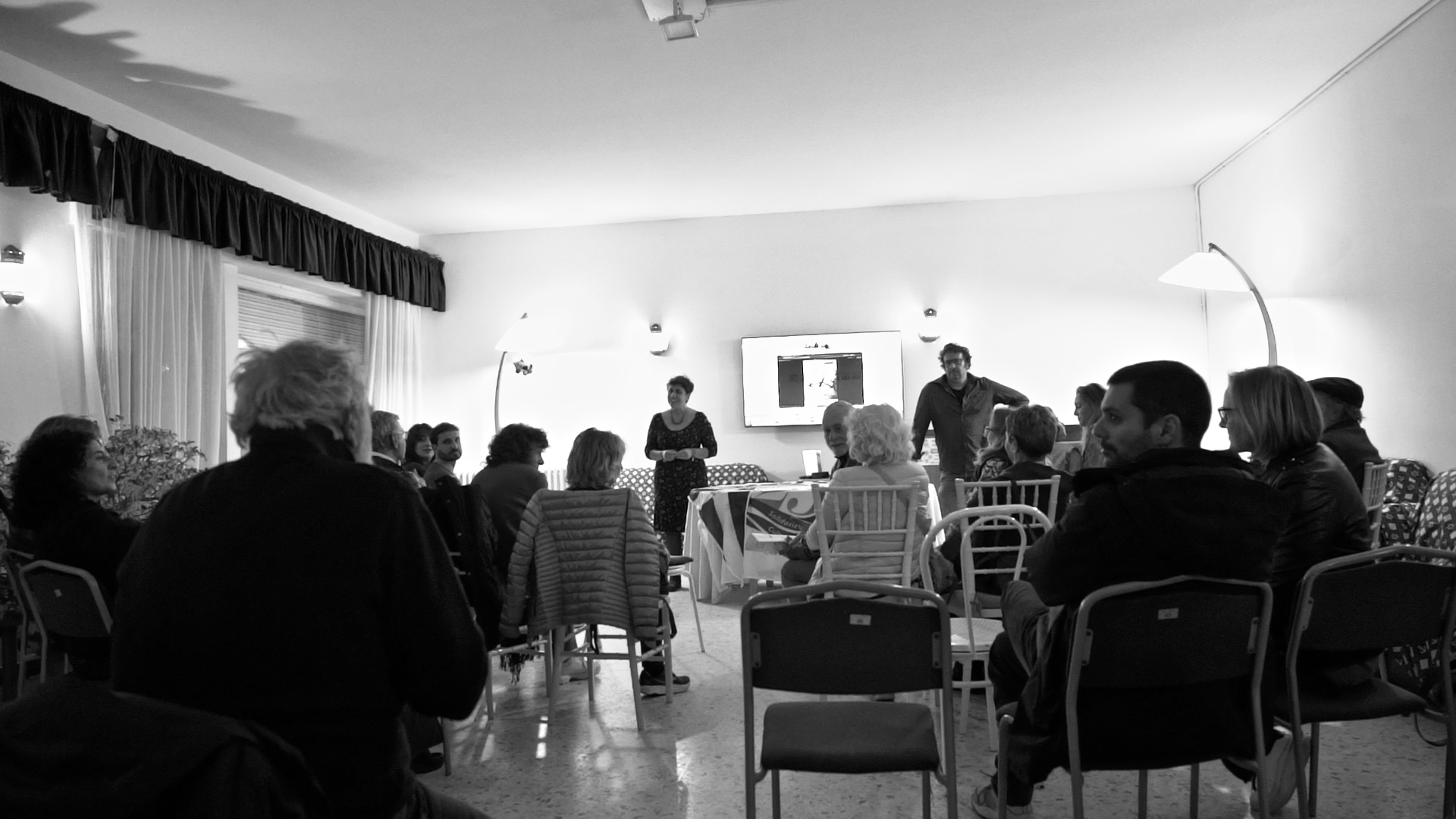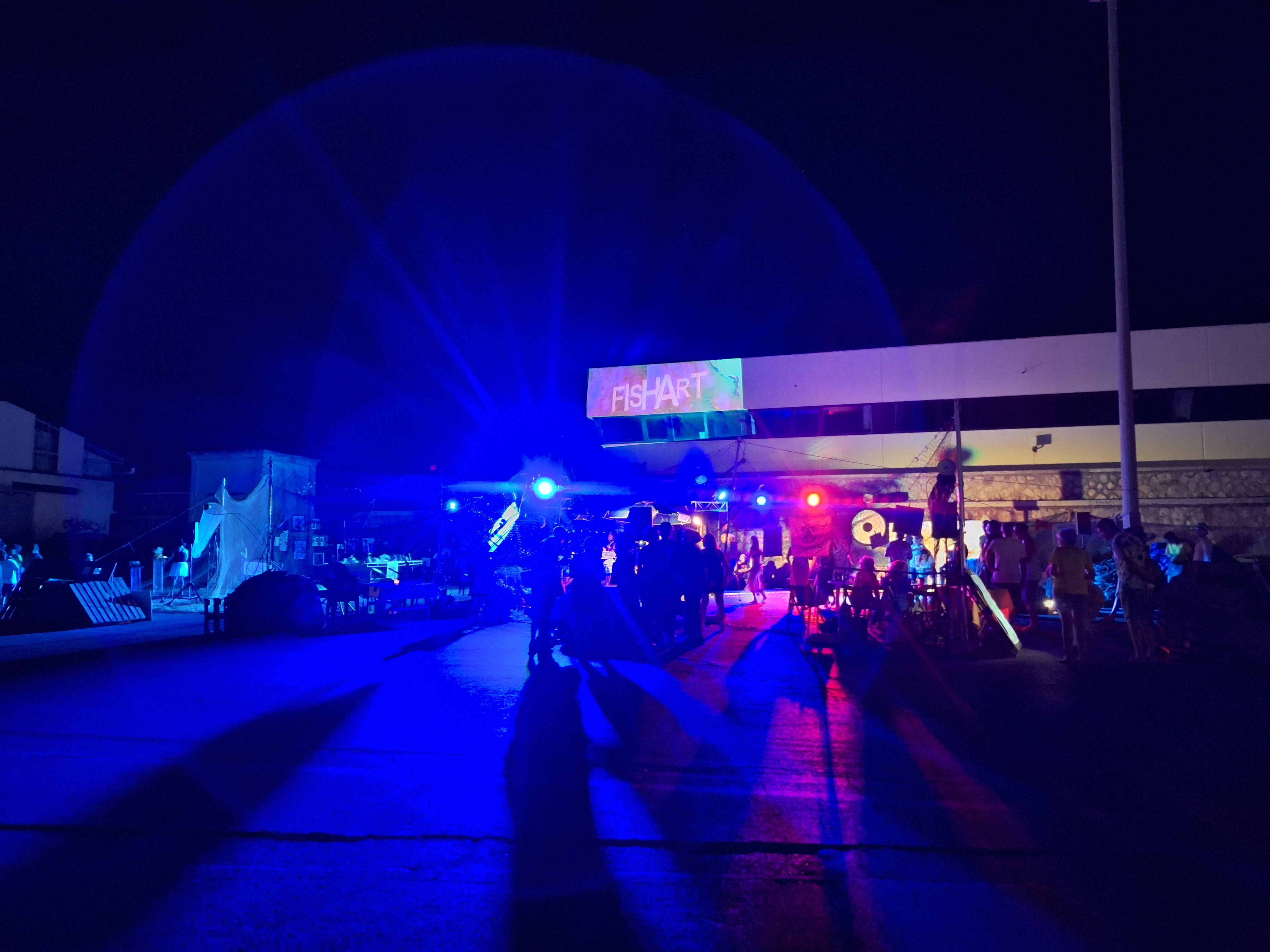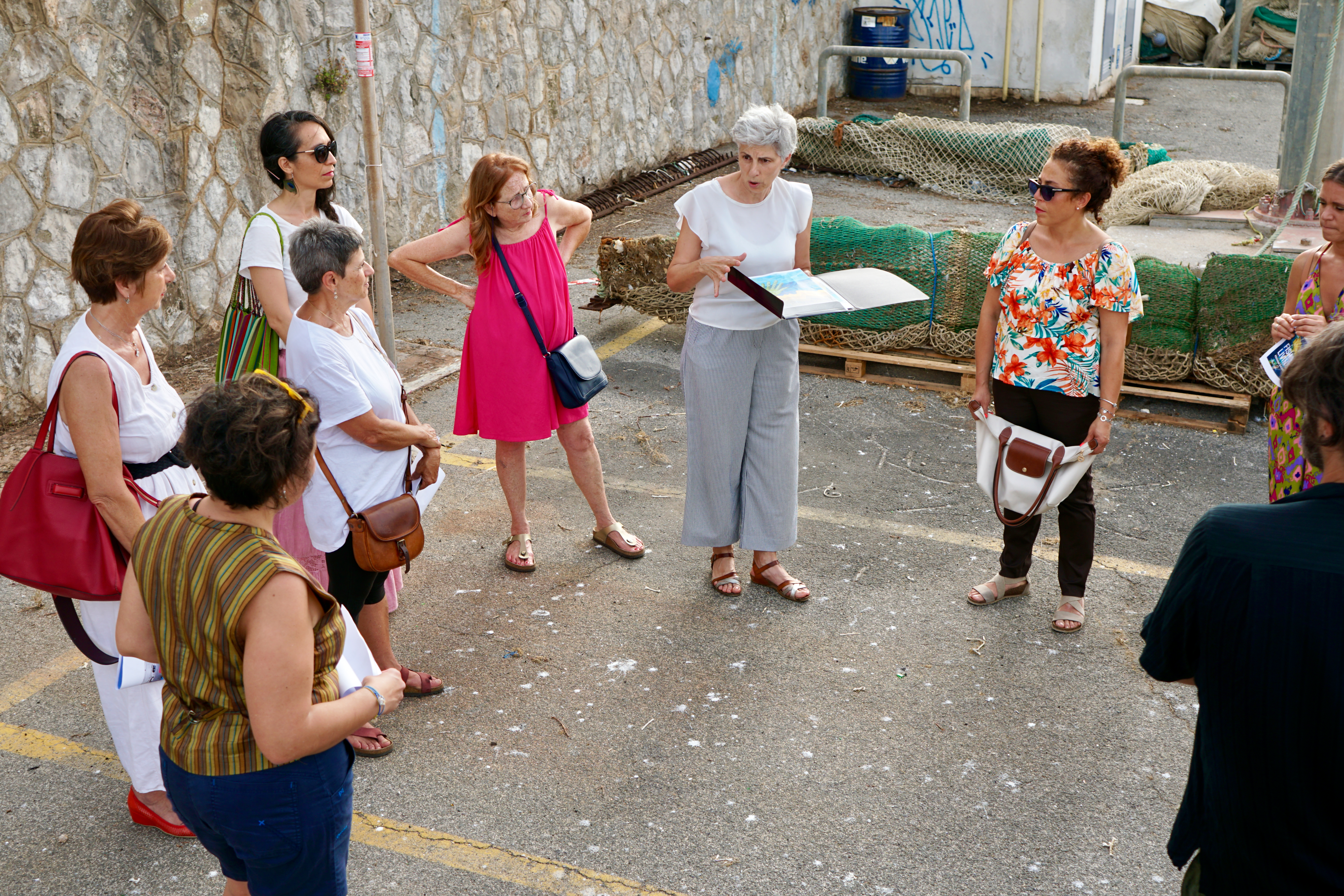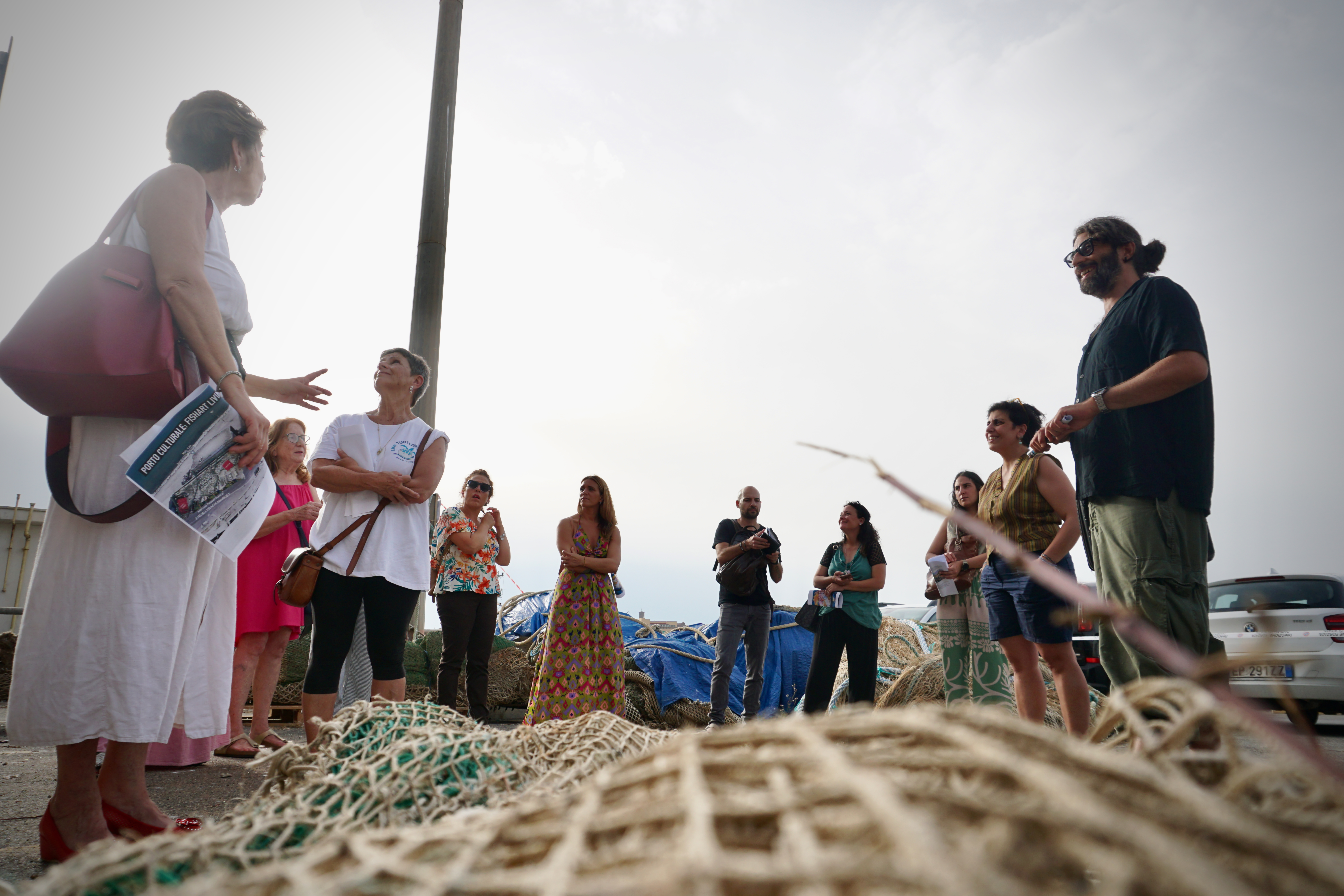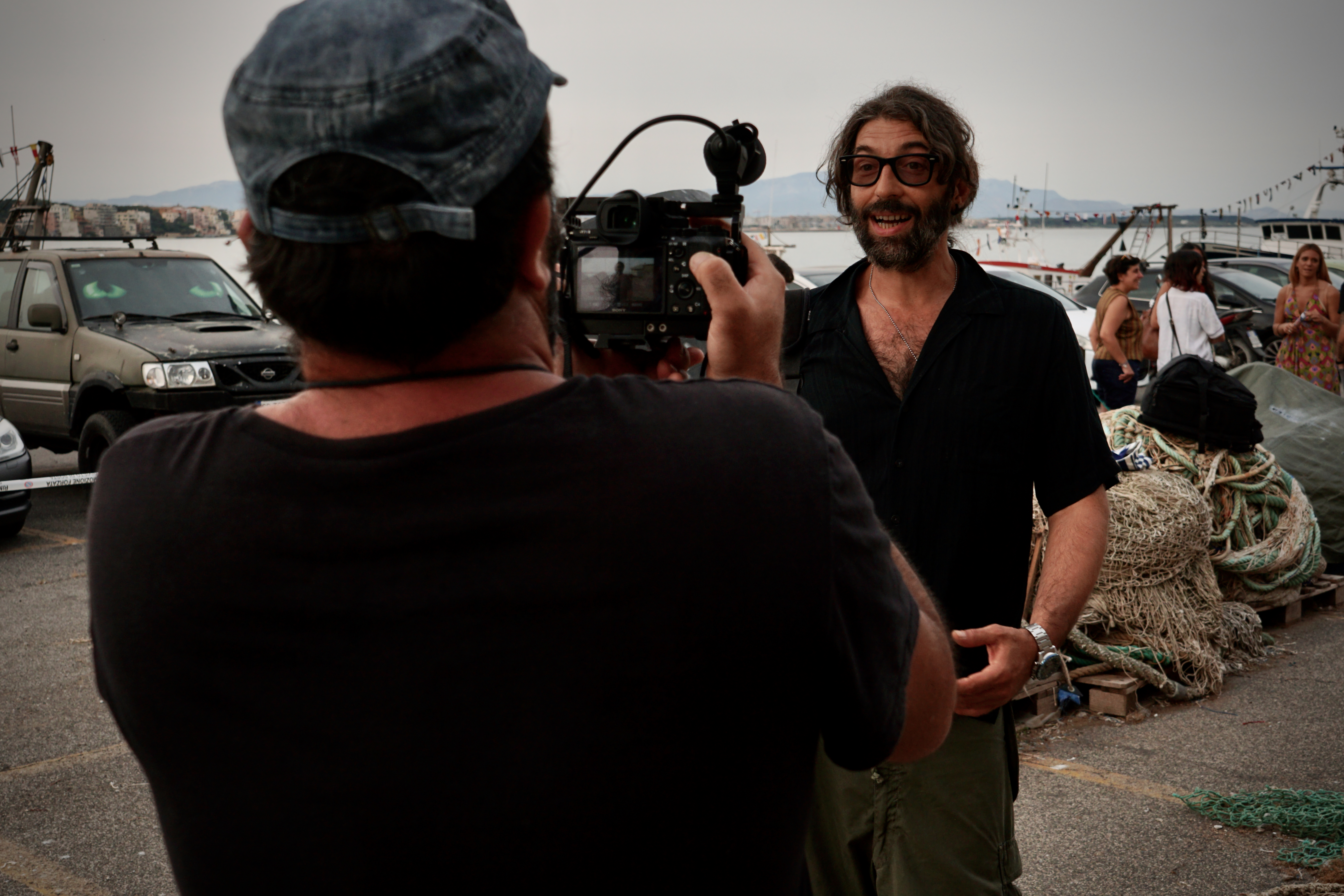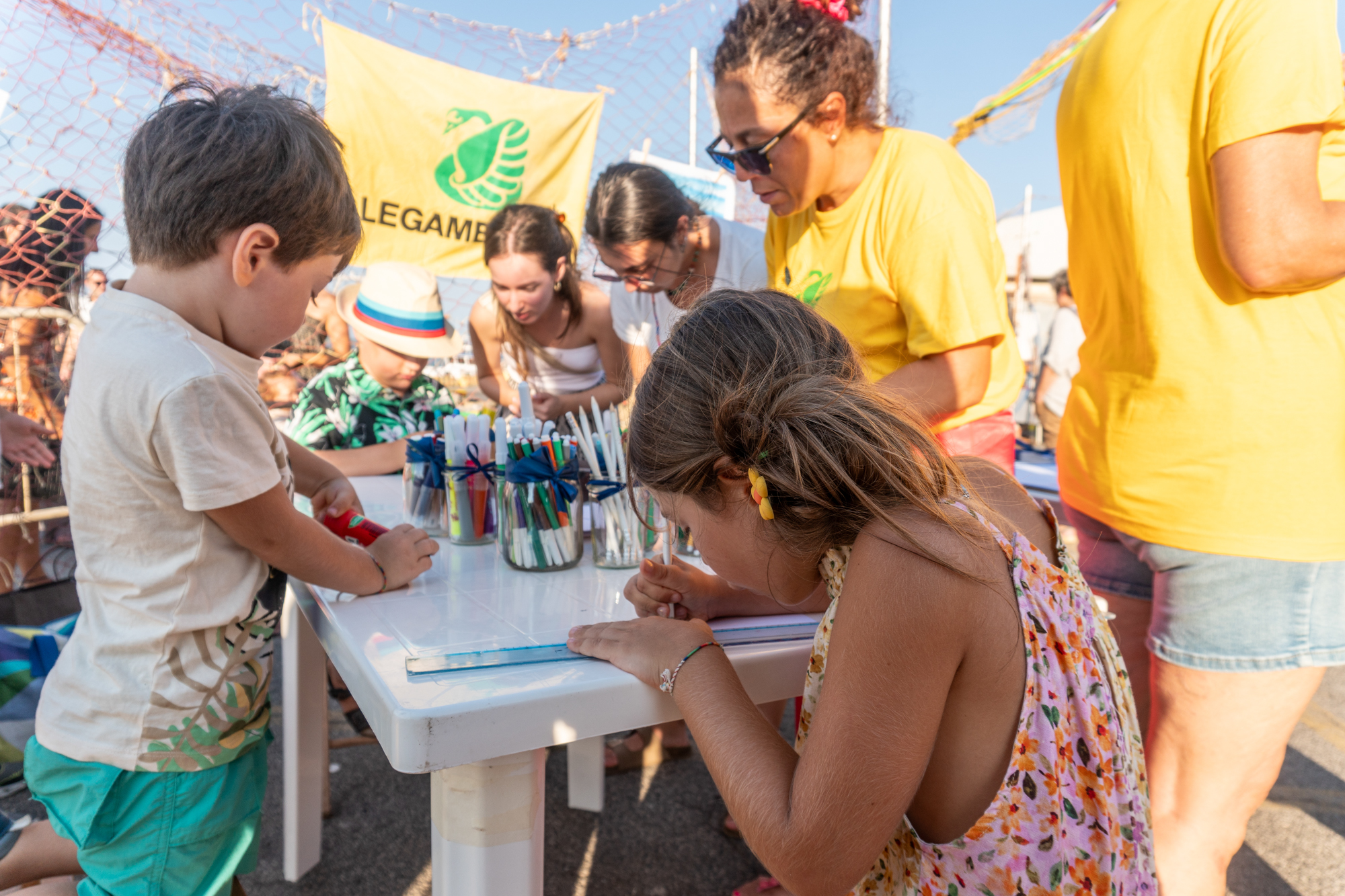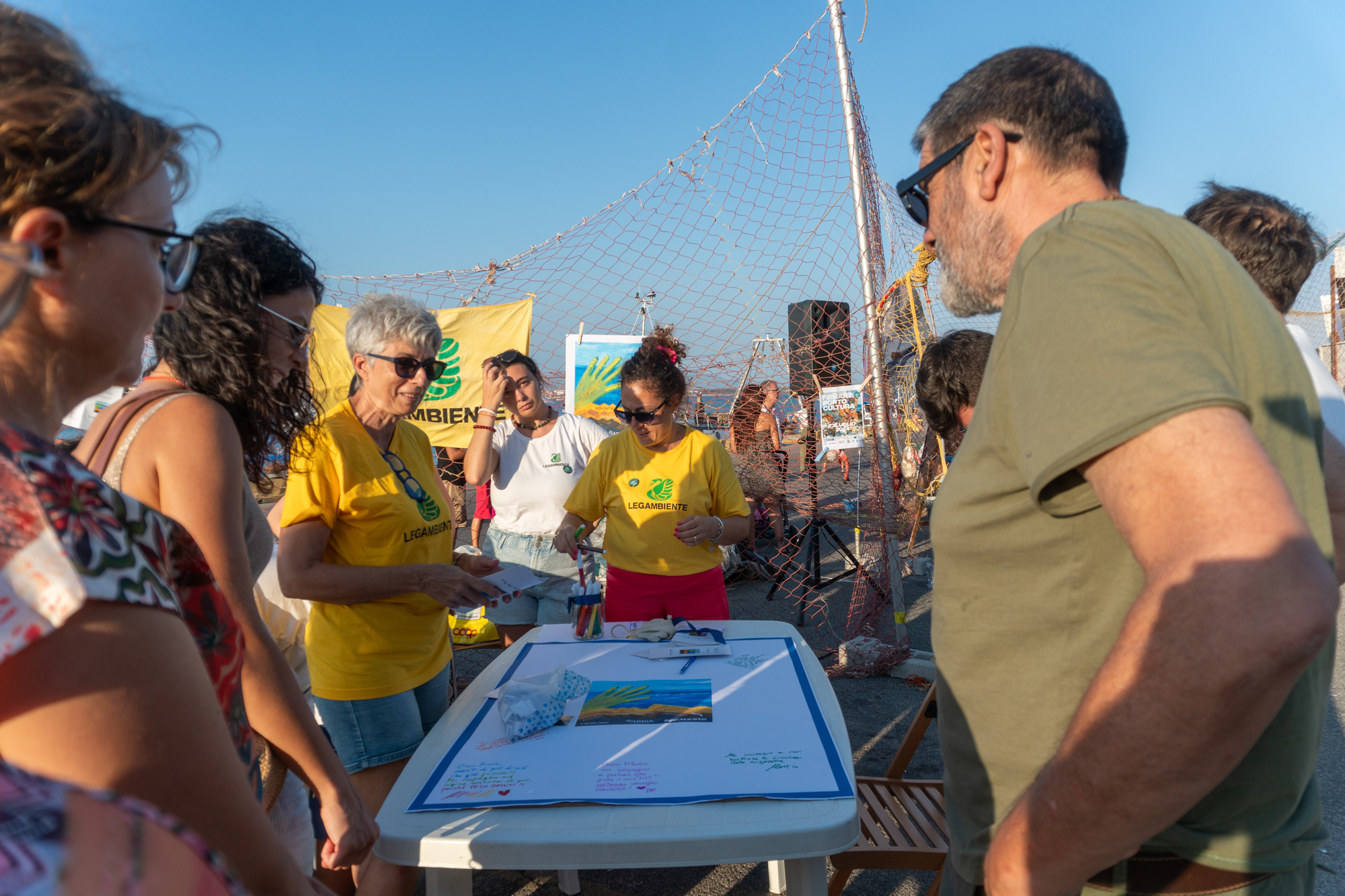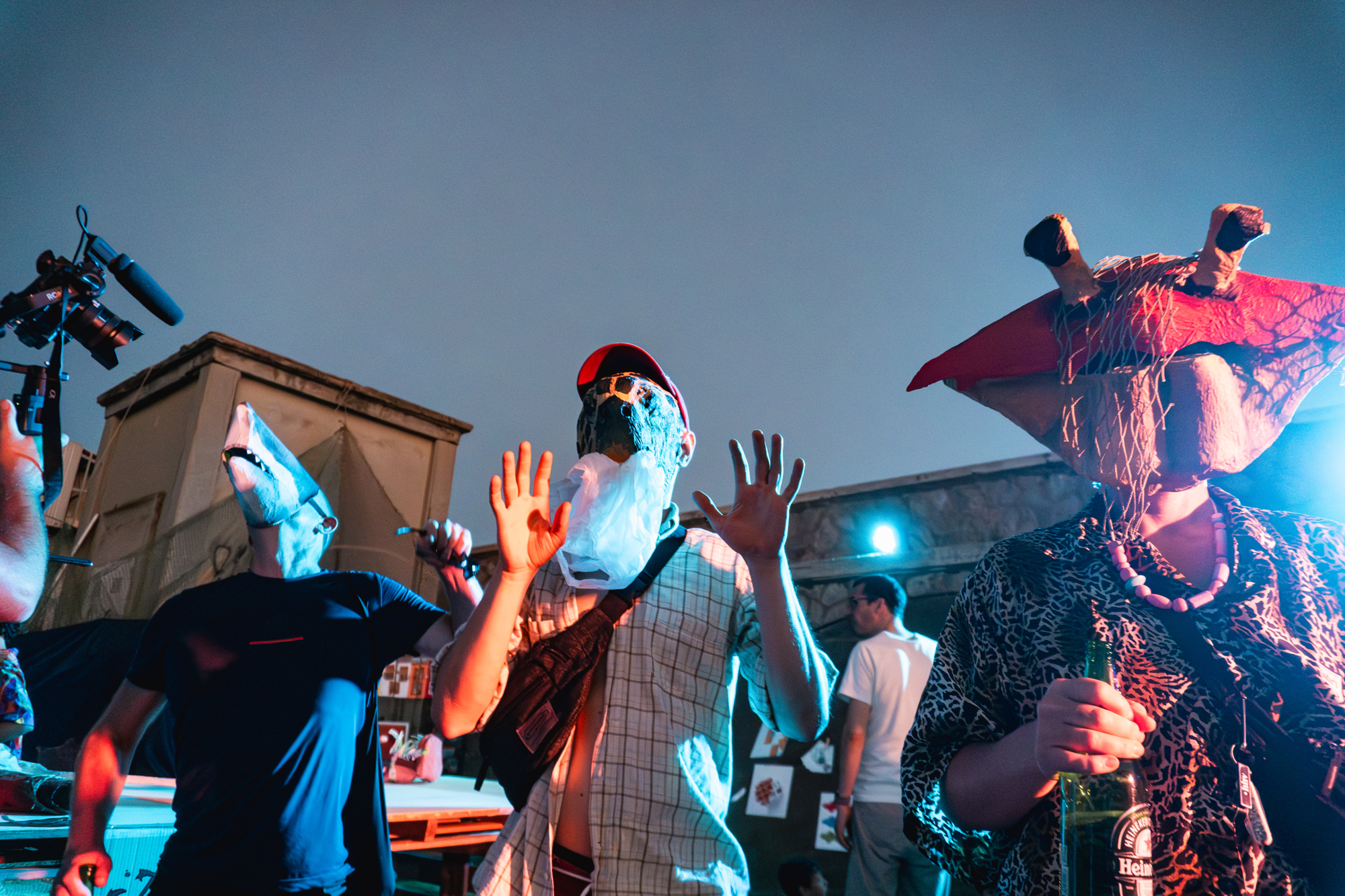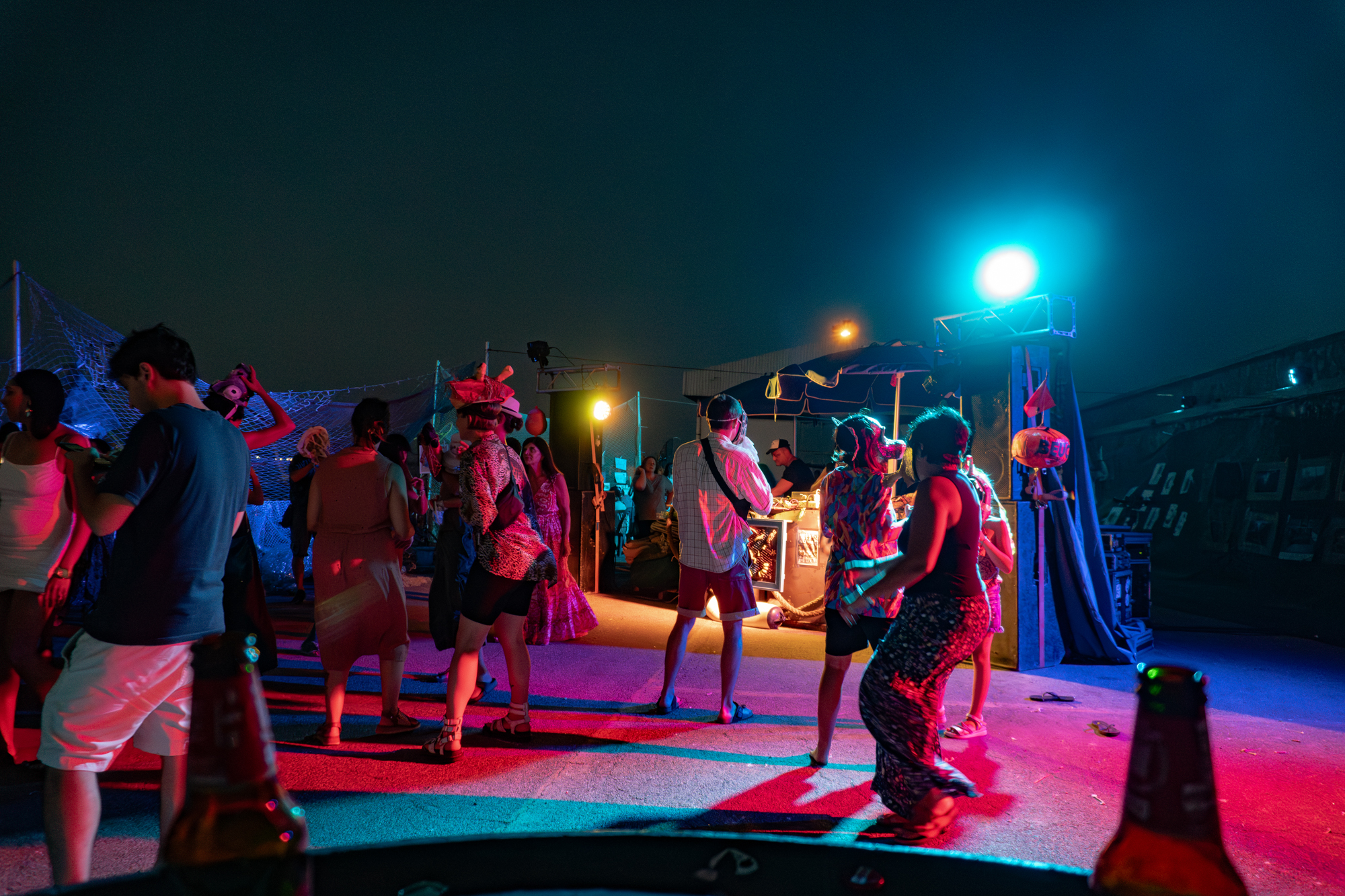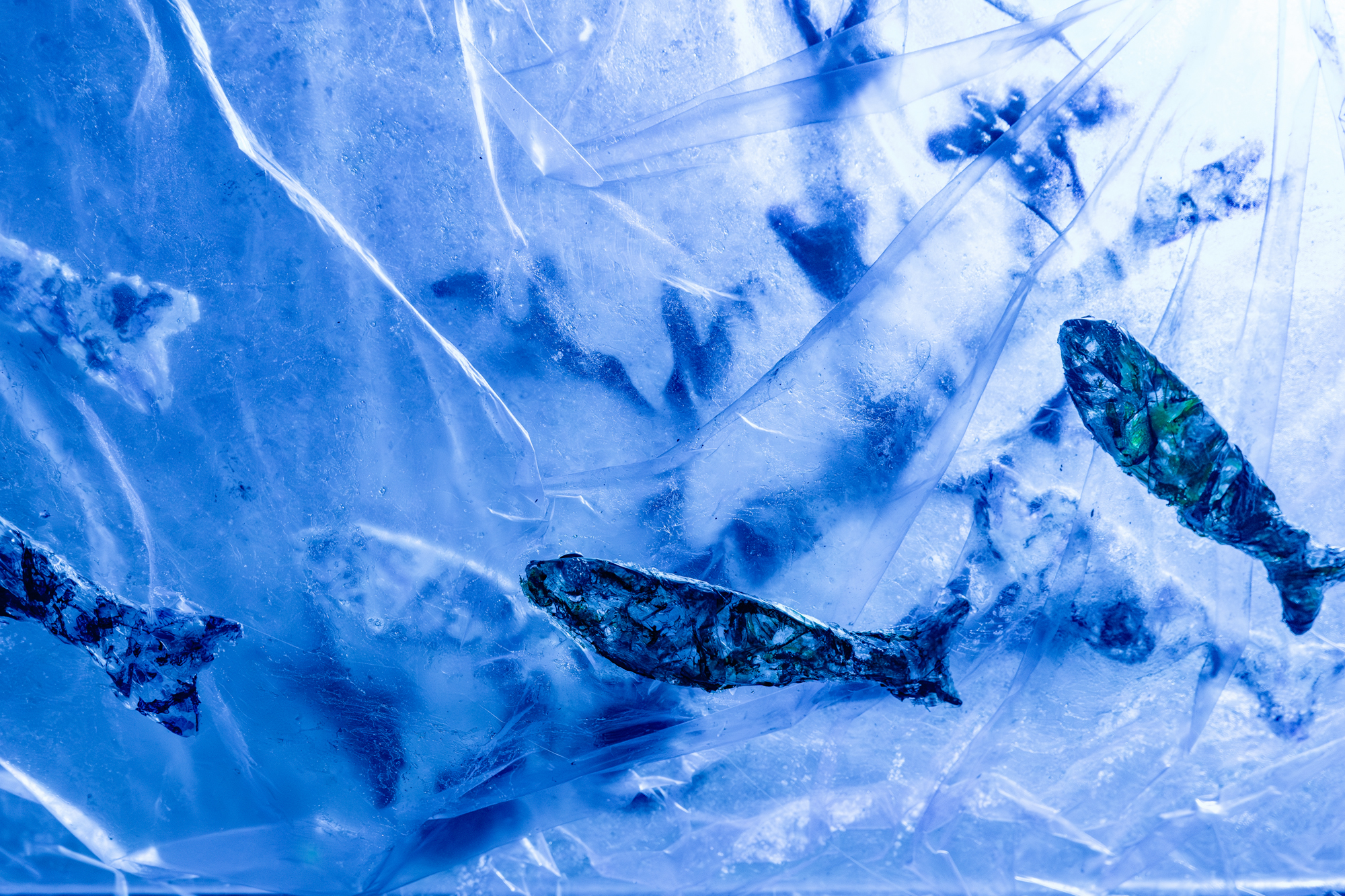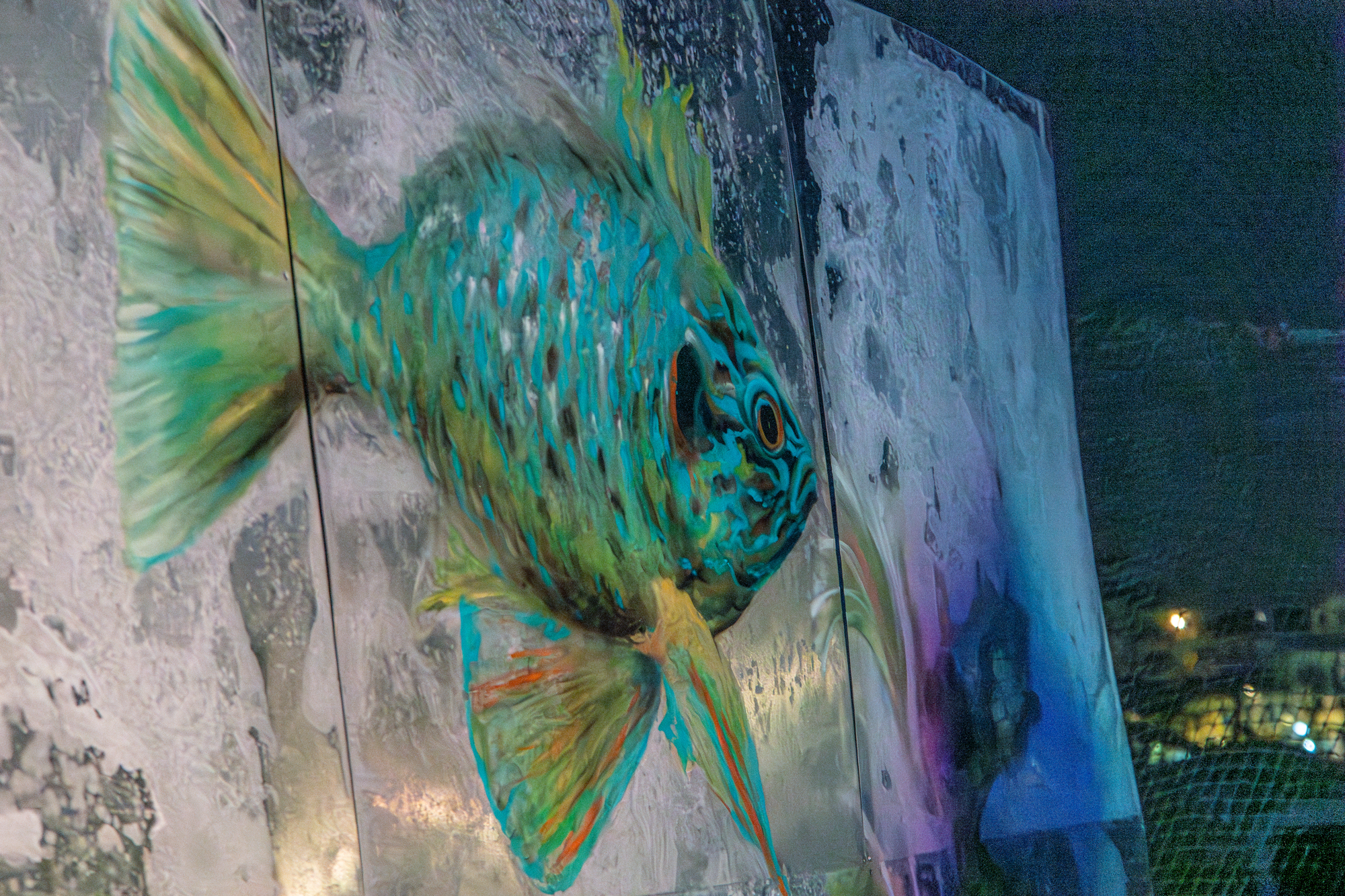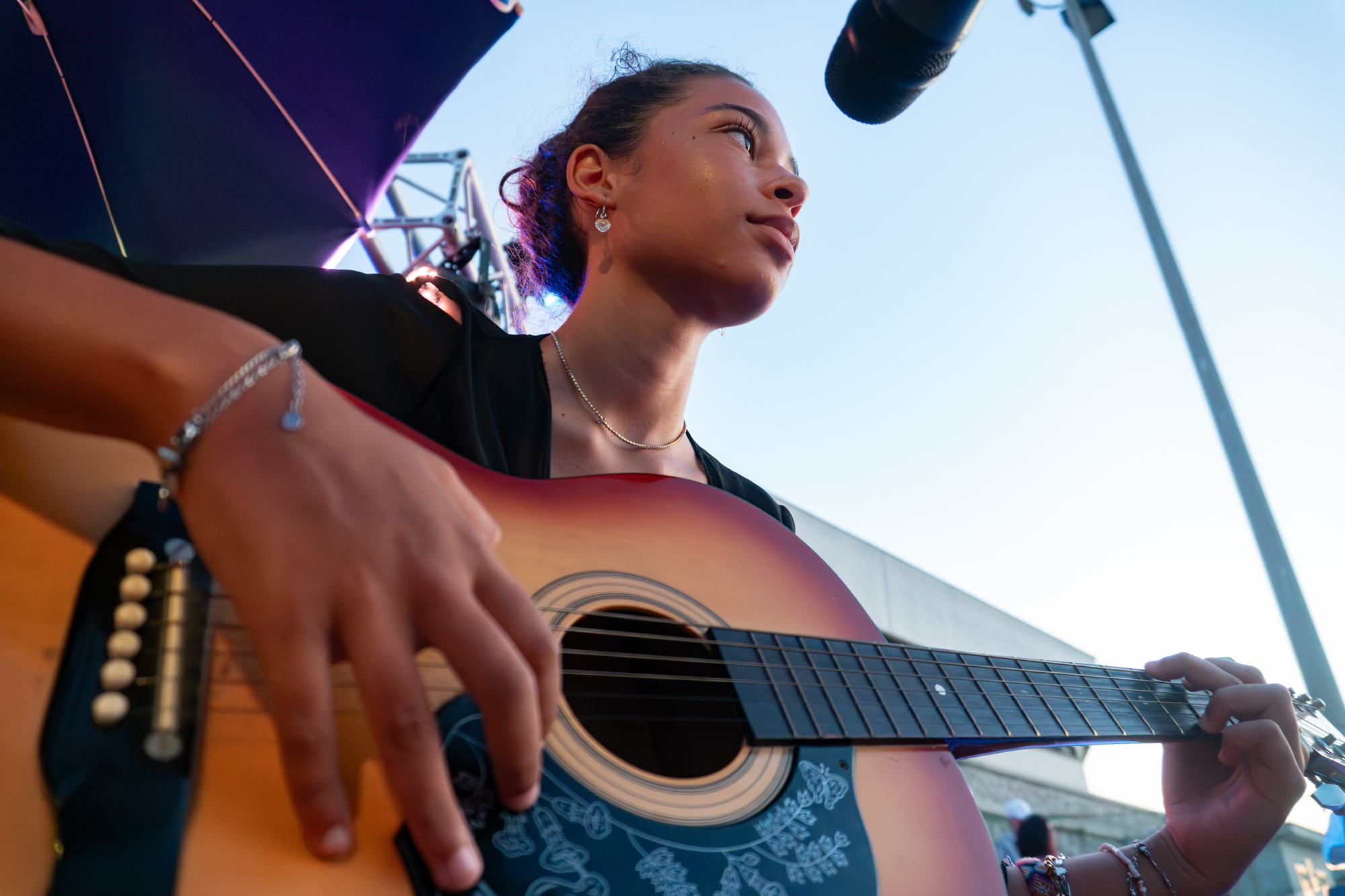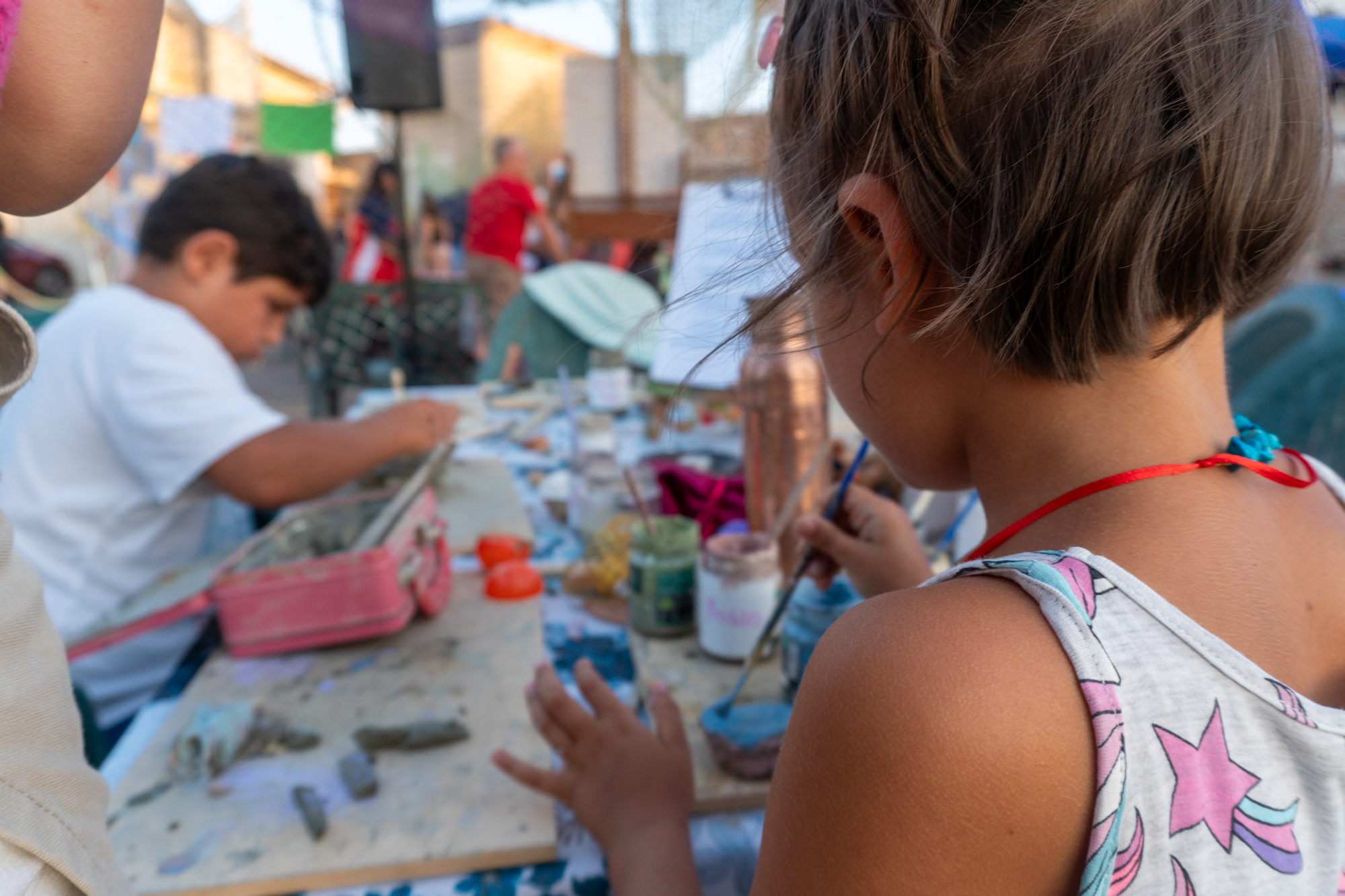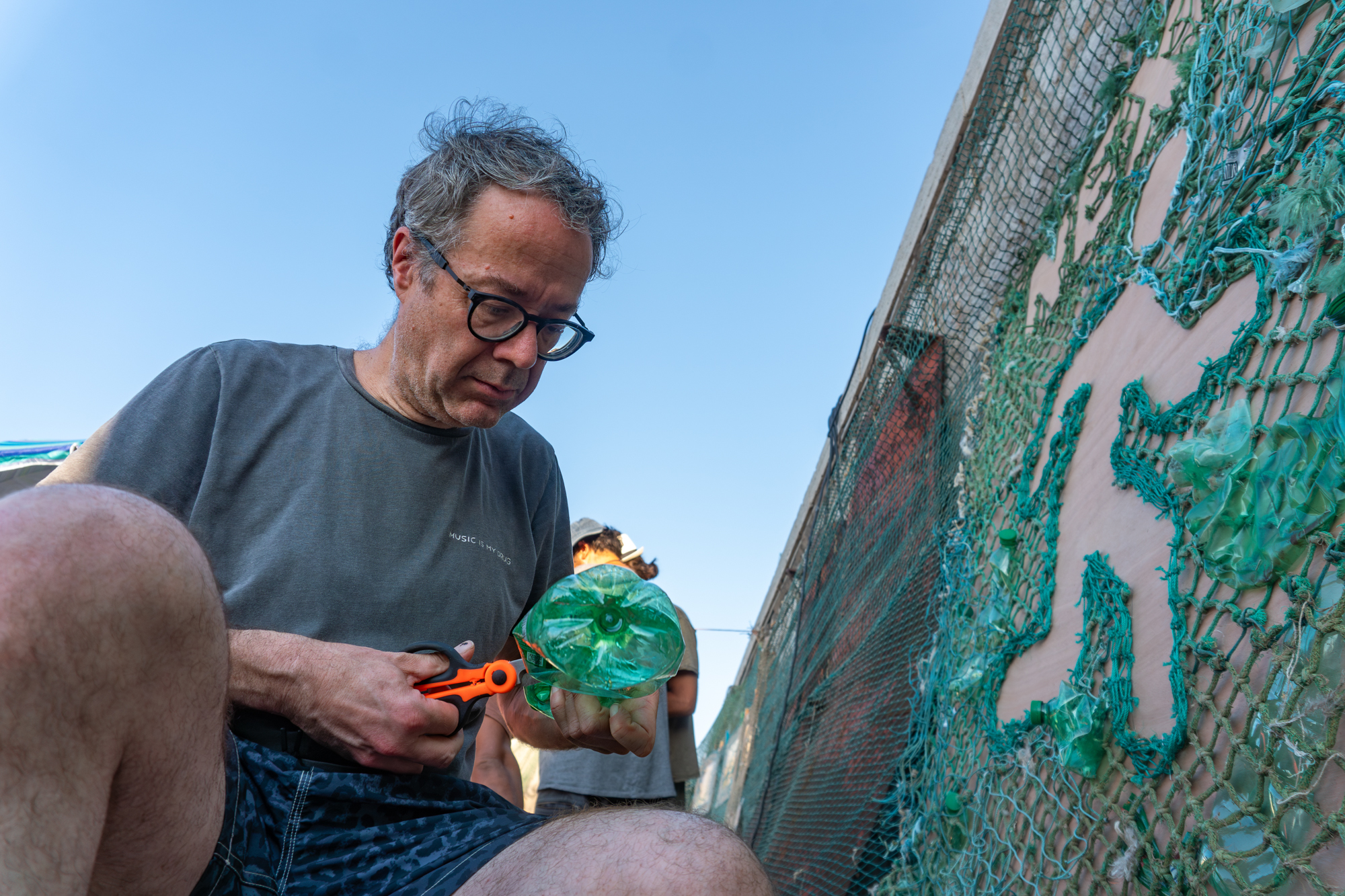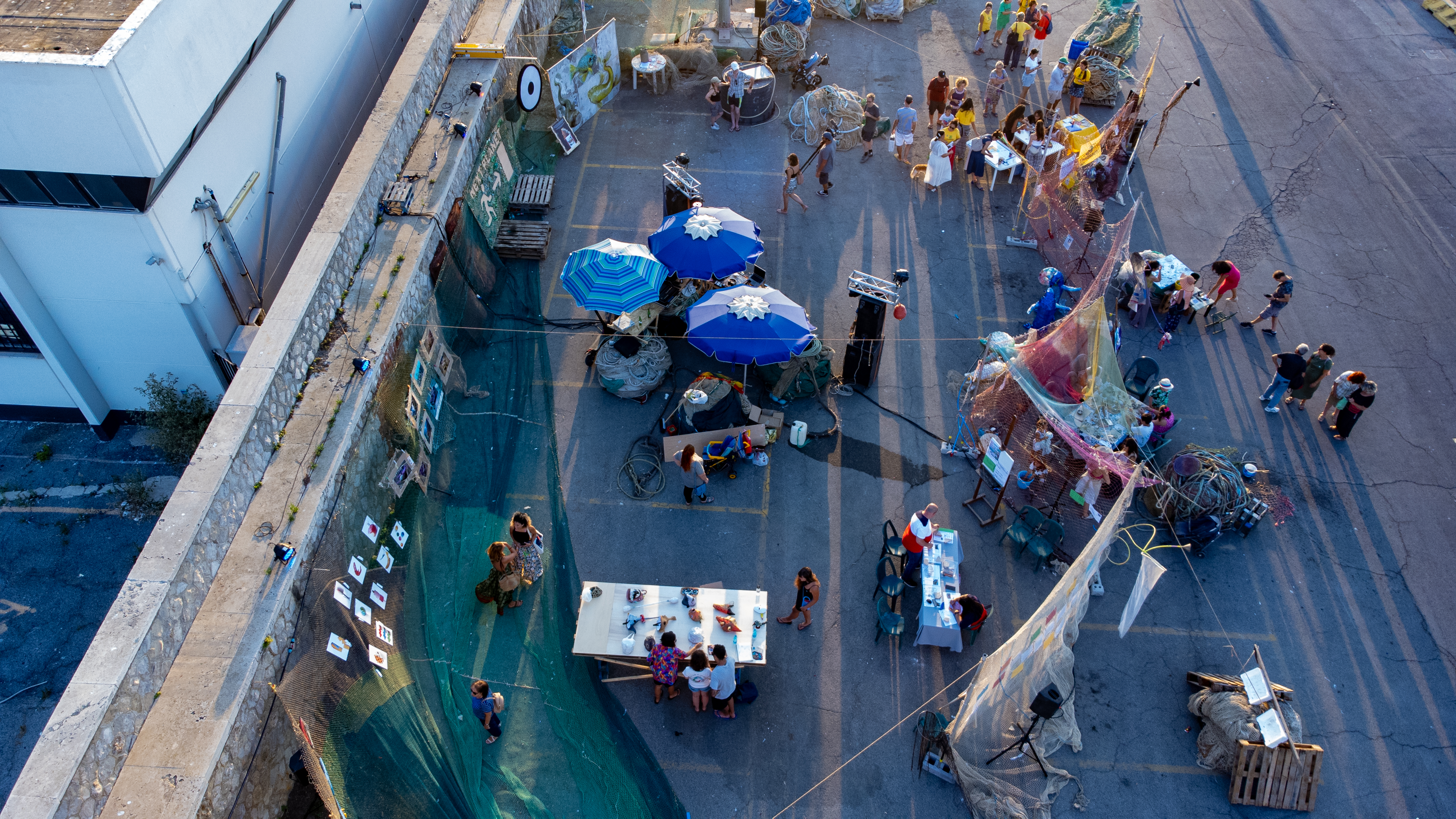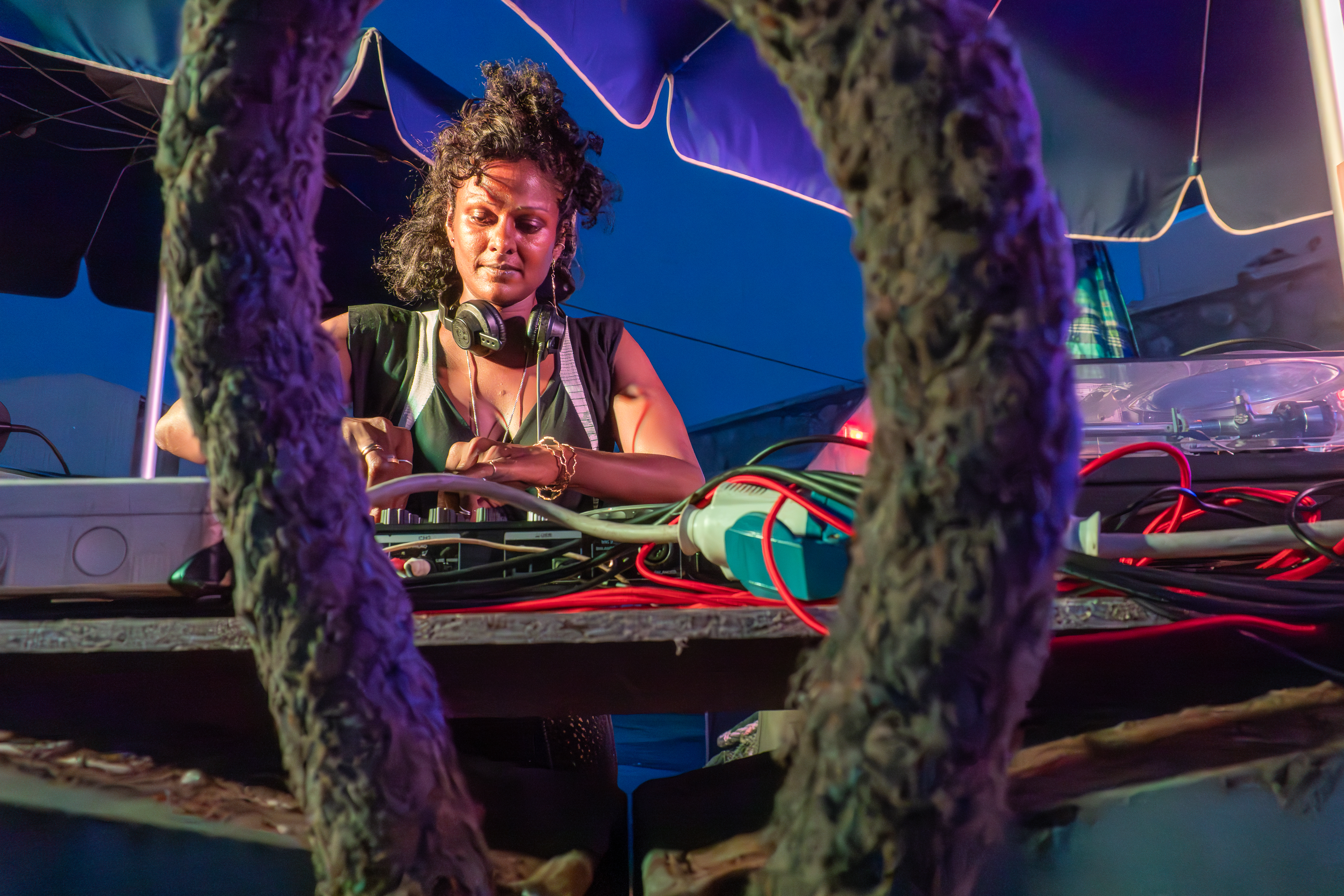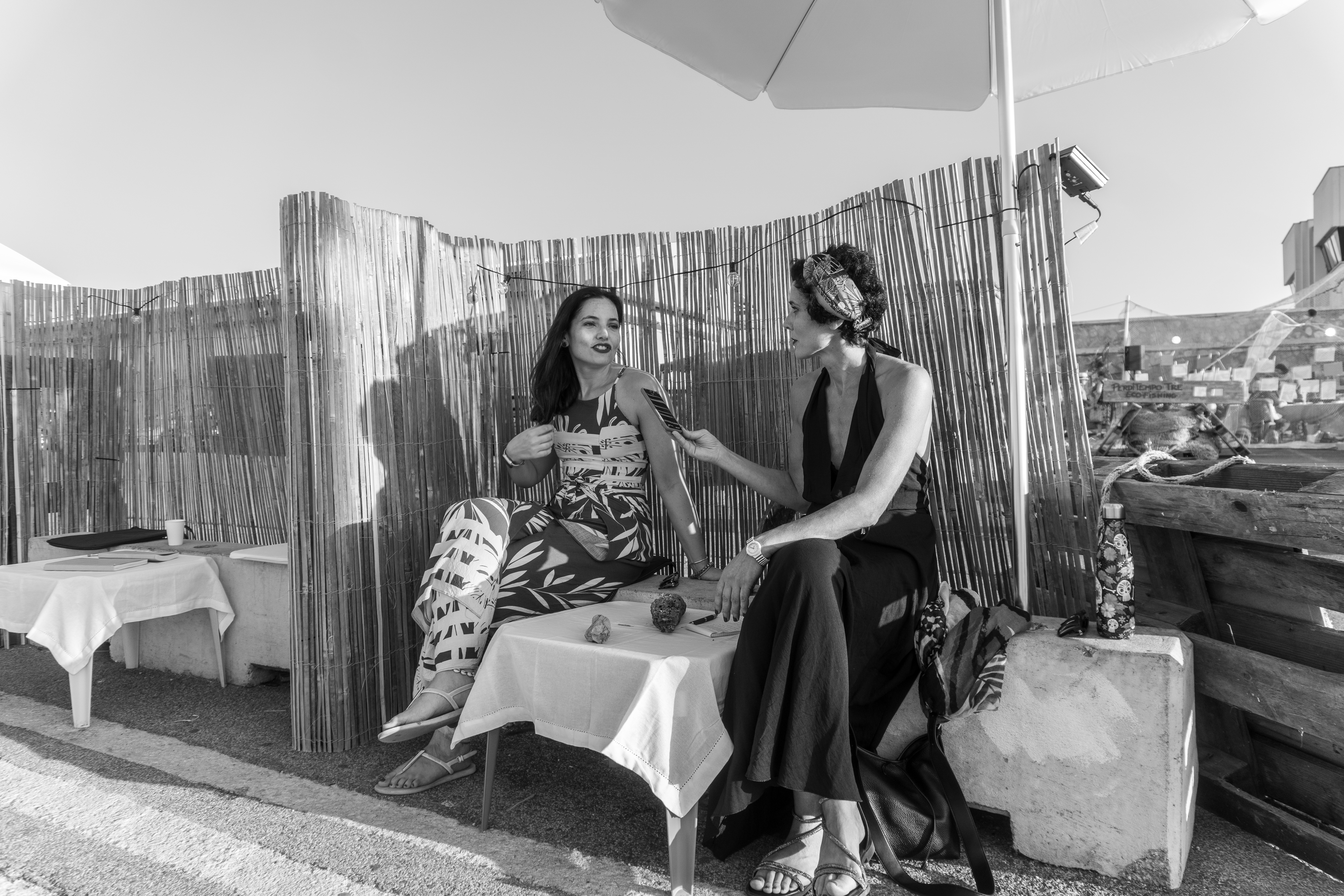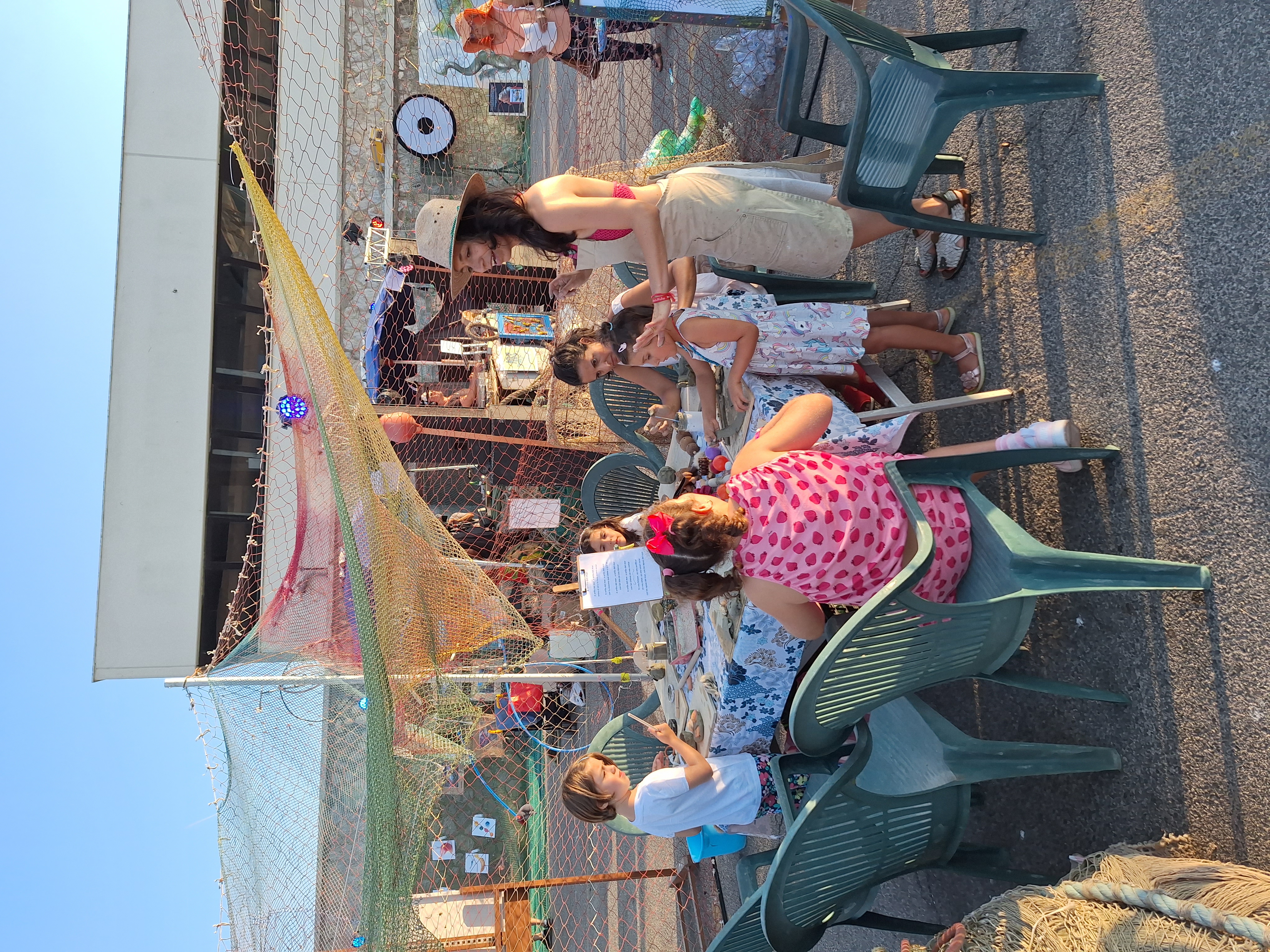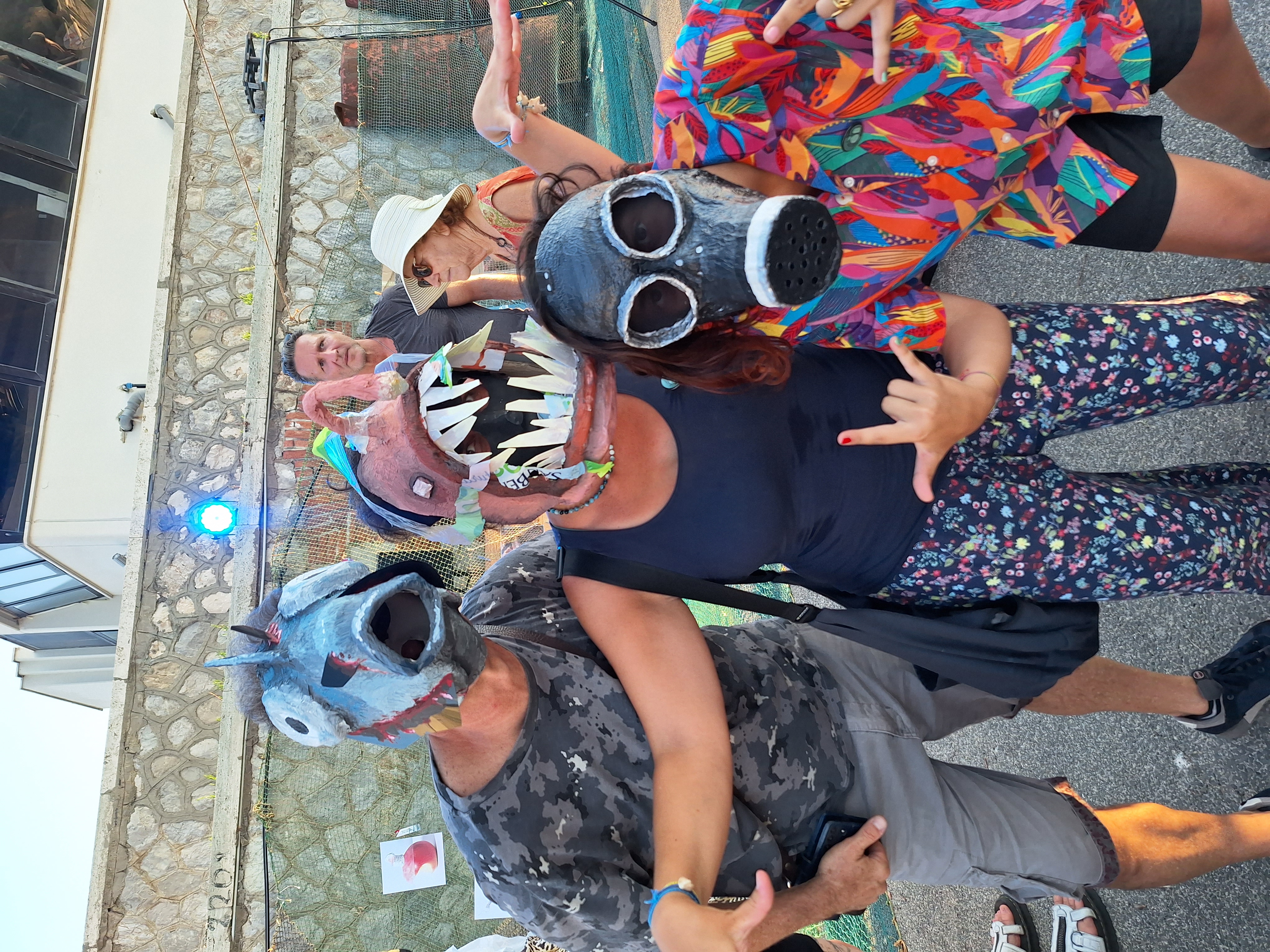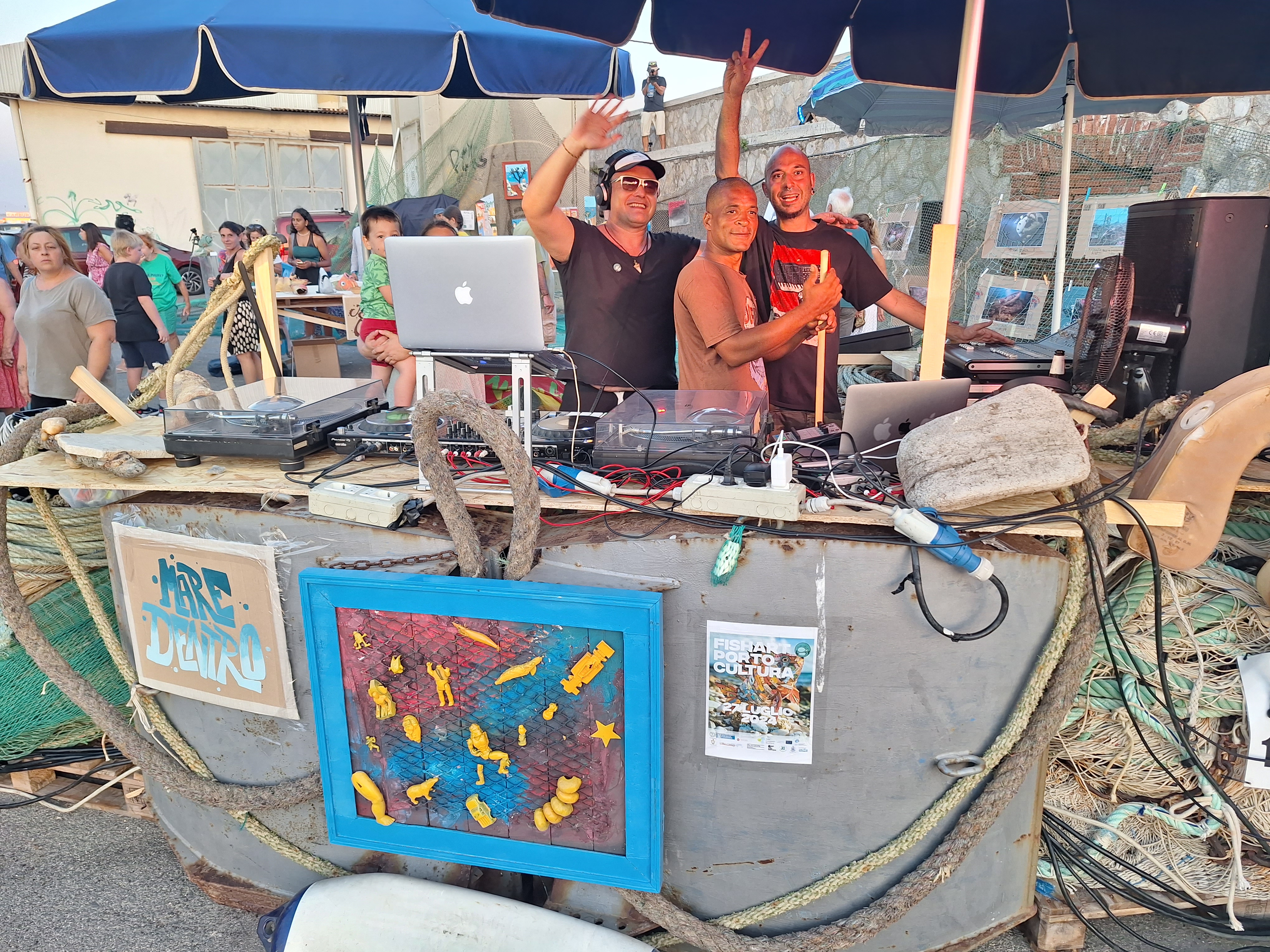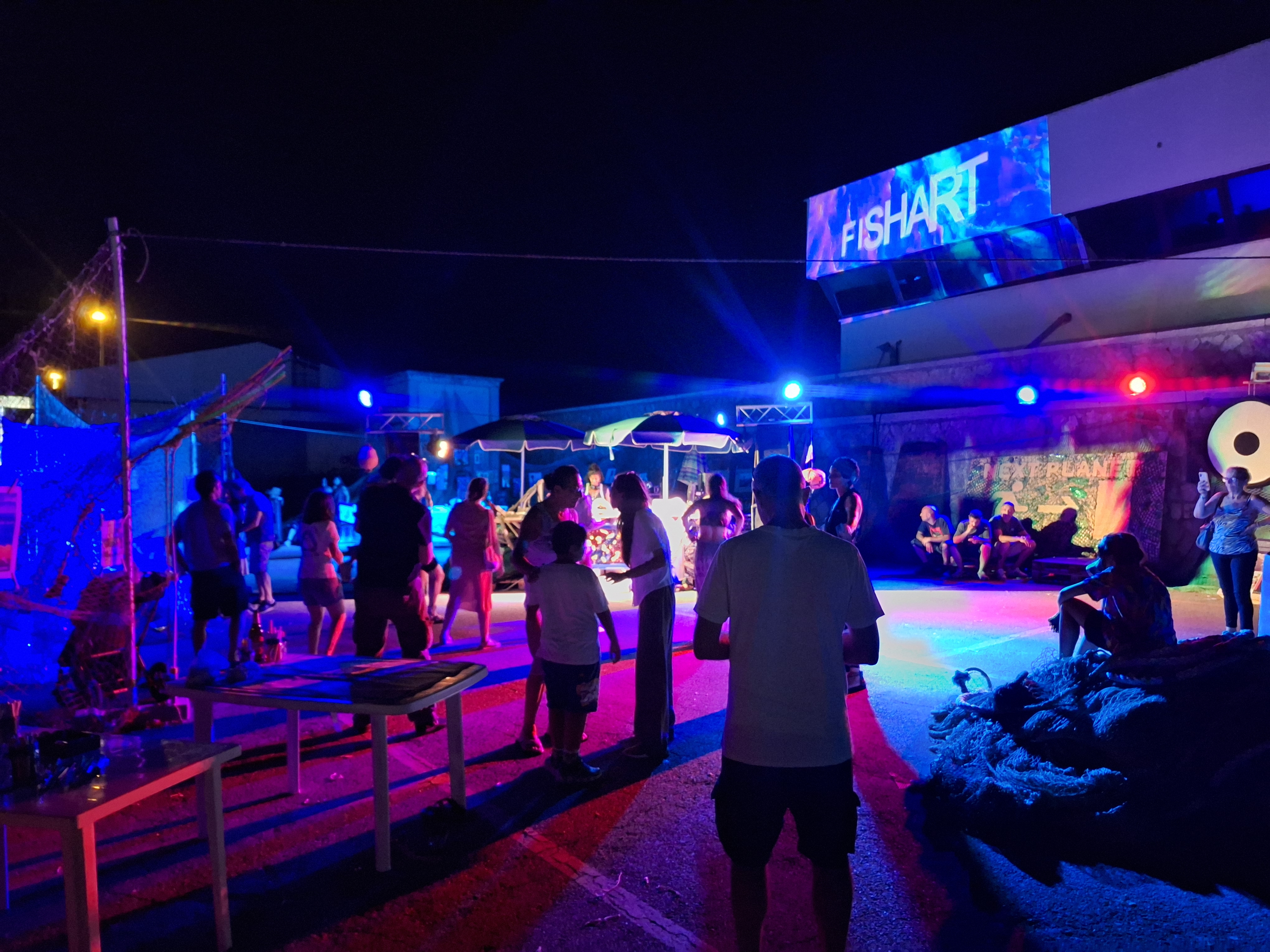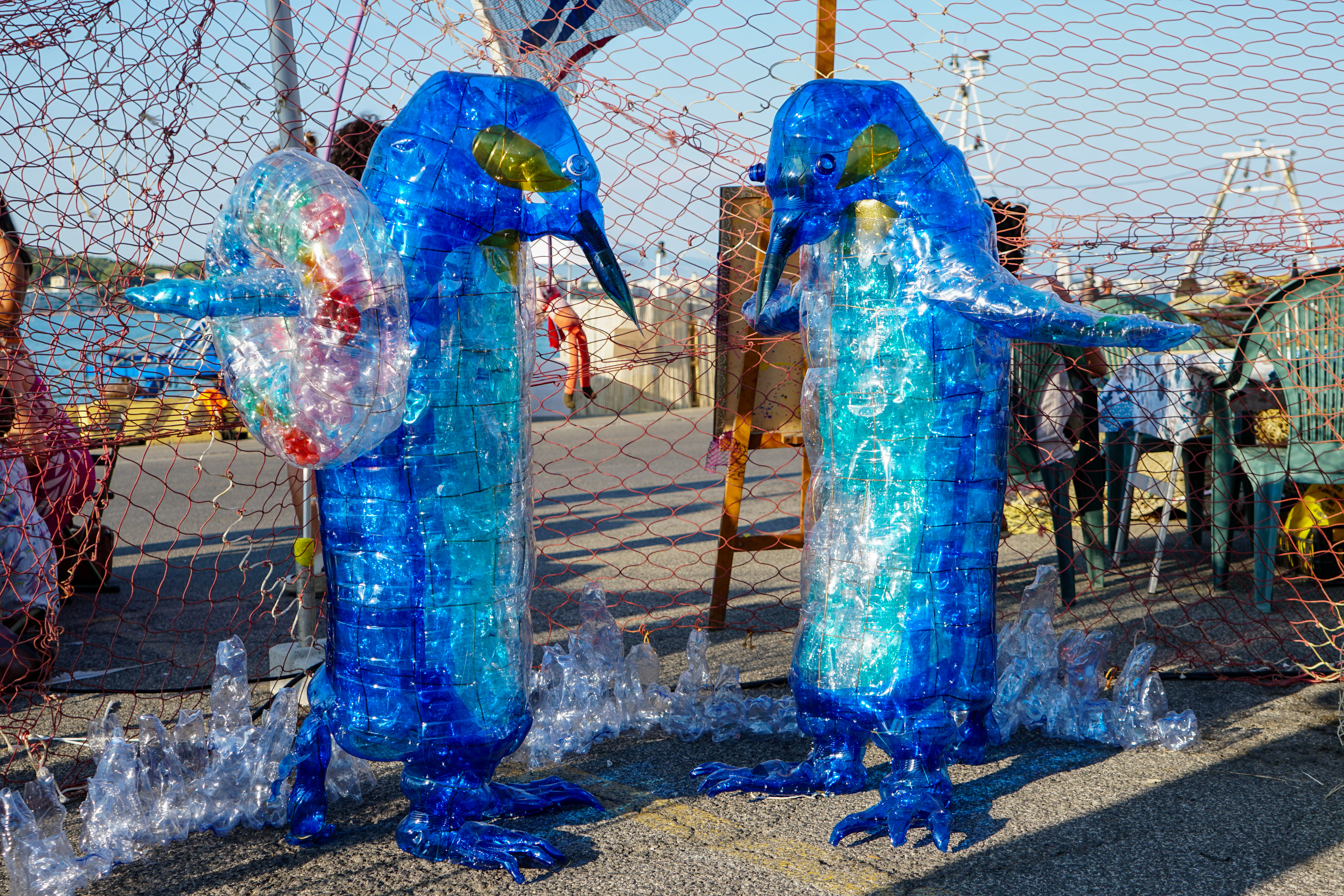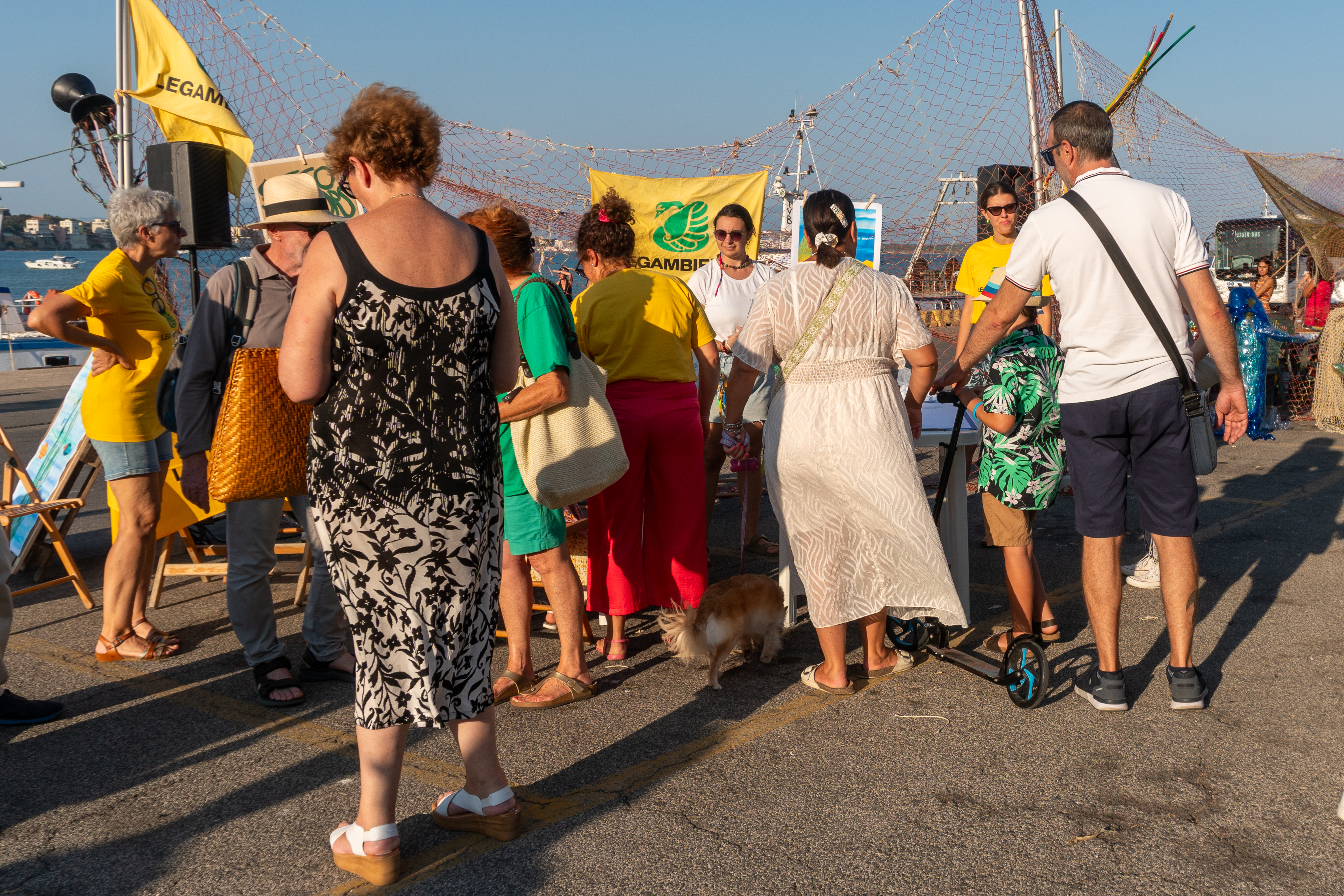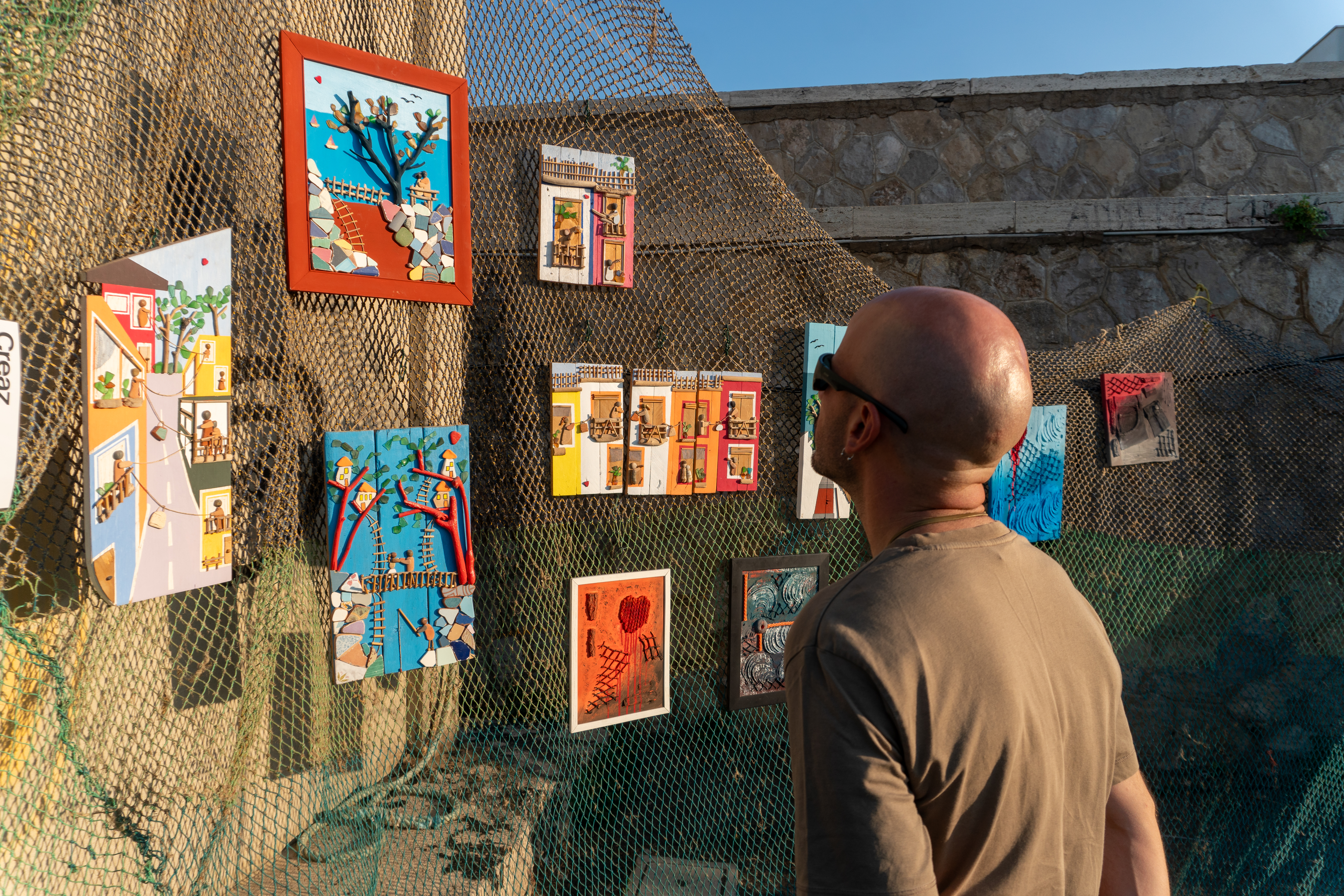Regaining a sense of belonging
FishArt
Participatory Art for sustainability and aesthetic transformation of Anzio Fishermen’s Harbour
FishArt piloted a participatory process to transform the Fishermen’s Harbour in Anzio, Italy, into an art&science community hub via co-creative events, for ocean literacy, public space care and sustainability. FishArt functioned as a living lab, including workshops, transect walks with fishermen, community plogging with schools, a participatory art vibrant FishArt with international artists, associations, migrants, seagoing people, businesses, scientists and institutions.
Italy
Local
Anzio (Province of Rome), Italy
Mainly urban
It refers to other types of transformations (soft investment)
Yes
2024-11-30
No
No
No
As a representative of an organisation
FishArt was a pioneering initiative promoting radically participatory art and co-education processes, revitalizing Anzio’s Fishermen’s Harbour (Italy) through participatory art and cultural engagement with marine public space. With the overall aim to raise awareness and public acceptance of sustainable behaviours against marine and coastal pollution, it promoted the synergic and co-creative transformation of a functional but degraded 1km-long harbour into a vibrant community hub. Specific objectives included: increasing the environmental, social and aesthetic quality of a neglected public space by the participatory educational and artistic production process on environmental issues affecting the ocean; engaging target in a Living Lab to experiment and stimulate an innovative mindset about society's relationship with the ocean; supporting the local administration sustainability-oriented initiatives and pursuing public ocean literacy and coastal management; stimulating citizens’ creativity and attachment to their habitat and the sea thanks to the engagement of all the other components of the population; strengthening international connections with existing EU art for ocean projects and experts for FishArt scalability, reproducibility and permanence, by producing high-impact documentation material. Building upon the local ecosystem analysis, a wide local network and the results of previous citizen science environmental research, FishArt outcomes exceeded expectations by (1) activating civic engagement and turning a degraded space into a cultural landmark. It (2) facilitating collaboration between target groups and citizens (seagoing professionals, environmental, cultural, social associations, schools, touristic services) (3) and co-designing of a sustainable future Harbour plan. Overall FishArt fostered a renewed sense of belonging and environmental stewardship.
Participatory Art
marine pollution
coastal and marine public space
co-creative place design
Harbour regeneration
FishArt sustainability objectives: (1) Increasing the environmental quality of the Fishermen’s Harbour, a neglected and derelict public space (characterised by visible pollution which easily reverses into the sea further affecting the already compromised health of coastal water); (2) Triggering collective engagement toward sustainability-oriented behaviours in an ecologically rich, still environmentally degraded, area; (3) Advancing sustainability (self)education and ocean literacy, notably against marine pollution; (4) Supporting local institutions’ blue infrastructurization and plastic-free plans. These objectives have been met by: Living Lab meetings with fishermen and institutions that brought to the extraordinary cleaning intervention in the harbour, the design of systematization and allocation of marine waste space, the reduction of plastic, the elimination of used oil open-air disposals; the FishArt festival with dozens of volunteers cleaning up the harbour; communication (video, photo reportages, press releases, posts…); workshops of international artists in the harbour; schools engaged in community plogging and festival; participatory design of the harbour organisation and Follow-up Plan. FishArt can be exemplary because built upon sustainability-related worries of local people (already identified and documented in previous EU SeaPaCS project) and gathered all local stakeholders around a transformative initiative that changed public space conditions; increased the public interest and presence of lay citizens in the Harbour after the installation of the artworks; established solid collaborations with City Council (aligned with regional and national frameworks such as the “Regulation on Collaboration Between Citizens and Public Administration for the Care of Commons 2023,” the “Plan for Use of Coasts and Beaches 2023,” and the “Plan Anzio Plastic Free”).
FishArt aesthetics and quality objectives: (1) increasing the aesthetics and quality of experience for people of the Fishermen Harbour to deter vandalism and degradation; (2) complying with locals demand to revitalize a place crucial for the traditional fishing, into a place representative of the city; (3) increasing social acceptability of aesthetic and sustainability-oriented quality and stimulating an enduring sense of belonging; (4) realizing high level, international and grassroot artistic and creative interventions in a culturally deprived area. These objectives have been met via: living lab workshops at the harbours and workshops with local stakeholders leading to the physical requalification of the harbour and increase control by the Harbour Authority and people passage; participatory collaboratorium meetings and transect walks leading to better and shared understanding in local population of the harbour situation and the need for making it a bulwark against abandonment; collecting citizens’ priorities addressed via a co-designed strategy for the Harbour and boosting target groups’ collaboration with local businesses and institutions to improve the quality of life; Fish Art Festival collectively organised during the Living Lab, which brought international artists in contact with fishermen and local associations to improve the aestetic experience of the harbour with ocean-related artworks (all recycled and repurpused material from the fishing activity, focus on plastic pollution, low impact, cleaning up section the day after). FishArt can be exemplary because: it operated on a Fishermen’s Harbour, which is a crucial economic and social area, with many seagoing professionals and business people operating there, as the local economy is highly dependent on the sea (fishing, commercial boating, and tourism); and innovatively experimented with the dialogue between fishermen cooperatives and artists societies to fostering a sense of community, attachment and care.
FishArt inclusion objectives: (1) Engaging all components of the population, with dedicated attention to underrepresented target groups of fishermen, especially migrant (from Tunisia and Morocco), and artists who for different reasons are largely disempowered in place-policy planning; (2) making culture, creativity and art an affordable experience for everybody, (3) regaining the sense of beauty too often neglected, (4) demonstrating that is possible to realise a universally accessible and engaging creative events; (5) promoting intergenerational engagement. These objectives have been met by: adopting our radically participatory strategy to investigate, discuss and generate transformative knowledge about ocean sustainability, involving business, institutions and the creative sector; adopting the participatory art approach, which refers to a range of art practices where the active participation of the viewer constitutes the central artistic medium and material; only using recycled fishing nets and community sourced equipment to host a large event (>200 people) and the artpiece (around 20 instead of the three planned) to ensure the minimum environmental impact; co-designing the follow-up plan in an inclusive way not to leave anybody behind with stakeholders and international experts to review it; involving young citizens from 5 local schools (primary and secondary) in creating the biggest community plogging event on the local beaches ever. FishArt is exemplary because: it worked in a degraded, culturally poor area, affected by corruption with illegal activities on waste; worked with underrepresented workers communities fishermen) and has been able to attract public attention on primarily sustainability issues.The team spent time on the ground, working in tight contact with people to engage them and confirm trust.
FishArt was a participatory initiative engaging citizens, stakeholders, and civil society in merging art, environmental awareness, and public engagement. It fostered dialogue, shared responsibility for marine conservation, and recommendations for sustainable port management and potential requalification as public space. About 250 students participated in “Let’s Not Make War, Let’s Fight Waste!”—combining environmental education with artistic expression. They cleaned the beach, collected plastic waste, and repurposed materials in workshops, fostering awareness of marine pollution and a sense of agency. Students have been Awarded ECO WARRIOR certificates, demonstrating how young generations can lead by example. Fishermen contributed with their firsthand knowledge of marine pollution, providing data on debris collected in nets and emphasizing the need for structured port waste management. This highlighted the link between maritime professions and environmental challenges, positioning fishermen as sustainability advocates. Civil society’s involvement extended through collaborations with artists, educators, and environmental groups, transforming waste into art and educational tools. These activities raised awareness and enriched cultural narratives around ocean conservation, making marine pollution more relatable. The Follow-Up Collaboratorium enabled community reflection and planning on Molo Innocenziano’s future as a shared space, identifying priorities like sustainable infrastructure, waste management, and inclusive urban planning. Their input shaped the FishArt Follow-Up Plan, integrating citizen proposals into Anzio’s municipal decision-making. Through interdisciplinary participation, FishArt showcased art as a catalyst for social and environmental change, bridging creative practice, scientific research, and civic engagement. It fostered immediate outcomes and sustained community involvement in marine conservation and sustainable port development.
FishArt was designed and implemented through multi-level collaboration, uniting local, regional, national, and European stakeholders to shape its impact. The initiative's success relied on interdisciplinary, cross-sectoral cooperation, addressing local challenges while aligning with broader sustainability and cultural policies. Locally, Anzio's community actively contributed to the project’s design and implementation. Fishermen provided key insights into marine pollution, inspiring the undergoing Isola Ecologica initiative to structure marine waste collection and recycling. Schools engaged in workshops and participatory actions, fostering environmental awareness among youth. Citizens participated in scenario-building during the Follow-Up Collaboratorium, proposing ideas for Molo Innocenziano’s redevelopment to keep port discussions community-driven. Regionally and nationally, support from academic institutions and environmental organizations was vital. The University of Turin and Sapienza University of Rome provided scientific expertise, integrating participatory methods with sustainability research. The Lega Navale Italiana in Anzio connected the project with the maritime community, ensuring relevance for those interacting with the sea daily. Environmental NGOs like Legambiente contributed to waste monitoring, organized plastic collection, and translated scientific findings into actionable environmental measures. At the European level, FishArt aligned with broader EU objectives, supporting sustainable development, environmental protection, and cultural engagement. This multi-tiered approach not only amplified the project’s reach but also reinforced the integration of local actions within global sustainability goals, ensuring lasting environmental and social impact.
FishArt involved multilevel stakeholders (associations, administration, international networks), pursuing radical participation (from design to realization), and adopting a transdisciplinary approach with na geographers, oceanographers, biologists, planners, communication experts (Sapienza University of Rome, University of Turin, international academic networks), and practitioners, schools, institutions and businesses (fishermen cooperatives with about 30 boats, 2 international artistic societies). It combined marine education and literacy with circular economy principles in marine waste recycling. Social geographers led the process using participatory action research to engage locals and leverage their tacit knowledge. Oceanographers and biologists collaborated with citizens to merge scientific insights on marine pollution with real-world experiences. An international committee of five scholars supported the selection of creative exhibitors for the final festival, providing reports on proposed performances and exhibitions. Scientists contributed to public space event design, with public space planners organizing community plogging activities involving over 250 students and ensuring professional site evaluations. FishArt's festival required extensive collaboration to ensure broad accessibility, enjoyment for diverse audiences, resource efficiency, and sustainable materials. The project thrived on cross-sectoral partnerships with art curators, notably Germany's Platoon Cultural Development society, and public space managers who engaged with local representatives to promote public space stewardship and raise marine plastic pollution awareness. Their event organization expertise was vital for the festival and Follow-Up Plan development. Collaboration with the UK-based Raw-News media company enabled high-quality documentation and visualization of the participatory process.
FishArt's innovative elements include: 1. A proposed solution for promoting sustainable transformation in Anzio’s large public space by combining action art, civic engagement in public space design, and economic area revitalization; 2. An adopted methodology based on participatory art, an emerging approach in marine social and action research (see EU Mission Ocean calls). Participatory art involves active viewer participation as the central artistic medium, shifting focus from the artist as sole creator to communal meaning-making. It fosters social bonds, channels art's symbolic capital toward social change, and results in open-ended, interactive works. The audience forms a temporary community through shared experiences; 3. A radically participatory strategy engages stakeholders, target groups, and citizens to explore ocean sustainability governance, involving businesses, institutions, and the creative sector. This approach boosts interest in the blue sustainable economy, particularly in ocean and water management. Participatory art enhances researchers' societal engagement, promoting ocean literacy, transdisciplinary research, reflexivity, and participatory governance; 4. A multidisciplinary approach (ethnography, cultural geography, visual methods, oceanography) and trans-sectoral collaboration address marine environment inaccessibility for laypeople. It tackles local issues identified by stakeholders, leverages tacit knowledge, supports international networking, and drives place transformation. The process draws from participatory citizen science, encouraging knowledge production and interpretation by non-professionals through collaboration; 5. Visual documentation follows participatory visual geography principles in marine contexts, with collective discussions on focus, narrative, and post-production.
FishArt combined (1) participatory research, (2) planning methodologies, and (3)participatory art. (1) The former involves knowledge production by non-professionals through collaborative planning for public space revitalization—from problem analysis to solution development, management, and implementation. Activities are scalable, adaptable, and designed for broad engagement. Visual documentation follows an action art approach, blending documentary and artistic reportage, guided by participatory visual geography principles in marine environments, with collective discussions on focus, narrative, and post-production. Outreach events included transect walks on boats and in harbor spaces, using hands-on art methods that encourage interaction with materials. (2) The Follow-Up Plan was developed through an open rapid Scenario Building process. (3) Participatory art shifts focus from the professional artist as sole creator to fostering social bonds through communal meaning-making. FishArt’s methods aimed to build cross-sector relationships, activate co-design, promote social inclusion, and establish networks through a management process tied to communication and engagement strategies. FishArt revolved around five phases: (1) Setup of a communication tools; networking with stakeholders and international experts; in site communication and media outreach (2) First Collaboratorium: a kickoff plenary with stakeholders and the administration for process design, issue discussion, and logistics (3) Living Lab: engaging stakeholders in designing the FishArt festival, ideating 22 performances/installations on marine pollution, and preparing artworks (4) Participatory education: harbour transect walks with fishermen, researcher-led discussions on ocean challenges, public meetings with schools, and “Let’s Not Make War, Let’s Fight Waste!” community plogging (5) FishArt Festival and Final Collaboratorium: presenting results and planning follow-up for scaling and sustainability.
FishArt shows strong potential for transferability and replicability through a scalable, participatory approach adaptable to coastal cities, cultural contexts, and policy frameworks. It offers a flexible model addressing local environmental and social challenges. A key aspect is participatory art for awareness and engagement, allowing citizens, fishermen, and policymakers to discuss sustainability beyond traditional scientific communication. This methodology can be tailored to other regions, using local artistic practices to address environmental issues. The Follow-Up Collaboratorium model, which united stakeholders to co-create plans for Harbour redevelopment, provides a replicable framework for inclusive urban and environmental planning in port communities. FishArt also introduced replicable circular economy ideas. The reusable fish boxes system offers a sustainable alternative to polystyrene crates, supporting EU circular economy goals. The Isola Ecologica initiative, for recycling marine waste collected by fishermen, can be adapted by other harbors facing similar pollution challenges. The media strategy, led by Raw-News, serves as a model for digital storytelling, enhancing outreach through video reports and artistic interventions. Its collaborative structure, involving local actors, universities, and policymakers, offers a blueprint for participatory marine conservation in European port cities integrating cultural and environmental sustainability into urban planning. FishArt benefitted fishing communities transitioning to sustainable circular economy models, educational institutions adopting participatory learning methodologies, and municipalities or cultural organizations using participatory urban and environmental planning. The project provided a scalable model fostering social and environmental change, adaptable to various geographical, cultural, and institutional contexts, promoting long-term impact across coastal regions.
FishArt addressed two global challenges: (1) marine and coastal pollution and (2) the neglect of marine public spaces. (1) Ocean pollution is a critical concern. FishArt responded to local pollution in the Gulf of Anzio, a biodiversity hotspot facing urbanization, privatized shores, mismanagement, and plastic accumulation. Building on findings from the EU Horizon project SeaPaCS (2023), which identified fishing plastics as key pollutants, FishArt focused on solutions that combined ecological, social, and economic benefits. It involved local, community-driven responses to global issues, ensuring social acceptance of sustainability policies. Unlike traditional citizen science, the project used knowledge as a tool for sustainable management design. Ecological expertise was amplified through transect walks, peer-to-peer training at the harbor, and the exclusive use of recycled fishing materials in the FishArt Culture SeaPort festival. (2) The degradation of public spaces, worsened by waste management corruption, impacts both maritime professionals and the broader community. The City Council’s commitment to restoration aligns with FishArt’s objectives. FishArt revitalized the historic Fishermen’s Harbour (dating back to the 17th century), offering Anzio a requalified public space through educational and artistic initiatives. Rooted in informal planning and citizen policymaking, these efforts are crucial for the public’s acceptance of infrastructure projects and the long-term sustainability of waste management sites, aligning with the EU Mission Starfish. FishArt showed that small investments and coordinated efforts can drive transparency and impactful results. Anzio Seaport stakeholders, connected to maritime culture, play a key role in transforming the area into a social hub. Engaging youth in maritime professions is essential for preserving this heritage, with FishArt's Porto Cultura initiative enhancing ecological awareness and community engagement.
The FishArt project has achieved demonstrable results, outputs, and impacts that directly align with its objectives. Through Living Lab events (KSN02), the project actively engaged over 400 citizens and local associations (30+ work meetings). These activities fostered direct community engagement with environmental challenges and served as platforms for co-creating sustainable solutions to marine pollution. The hands-on sessions enabled citizens to work alongside fishermen, artists, and scientists, thereby enhancing local capacity for addressing marine waste and influencing policymakers’ coastal management strategies. Non-degree educational sessions (EITHE08.1) brought together schools and community members to learn about marine conservation (2 multidisciplinary and multi-sectorial transect walks; 1 Community Plogging). These sessions boosted environmental awareness and provided practical knowledge on waste reduction and sustainable practices, with lasting benefits. FishArt also conducted extensive awareness campaign (CL01) on marine pollution via participatory events (2 Plenary Collaboratoriums; 3 Scientific dissemination events; 1 Final Festival with 5 international artists, >15 local artist and associations, over 300 people involved). By translating complex environmental issues into accessible artistic narratives, FishArt successfully fostered ocean protection and commitment to environmental stewardship. Communication materials (COM01)—including detailed reports, 2 professional video repoortages and 1 professional photo exhibition, newsletters, and press releases—played a crucial role in amplifying the project’s reach. These ensured project’s achievements and effectivelessons learned dissemination to both local and international audiences, reinforcing the project’s broader impact. Collectively, FishArt delivered environmental benefits and strengthened community bonds in Anzio, potentially scalable and replicable.

